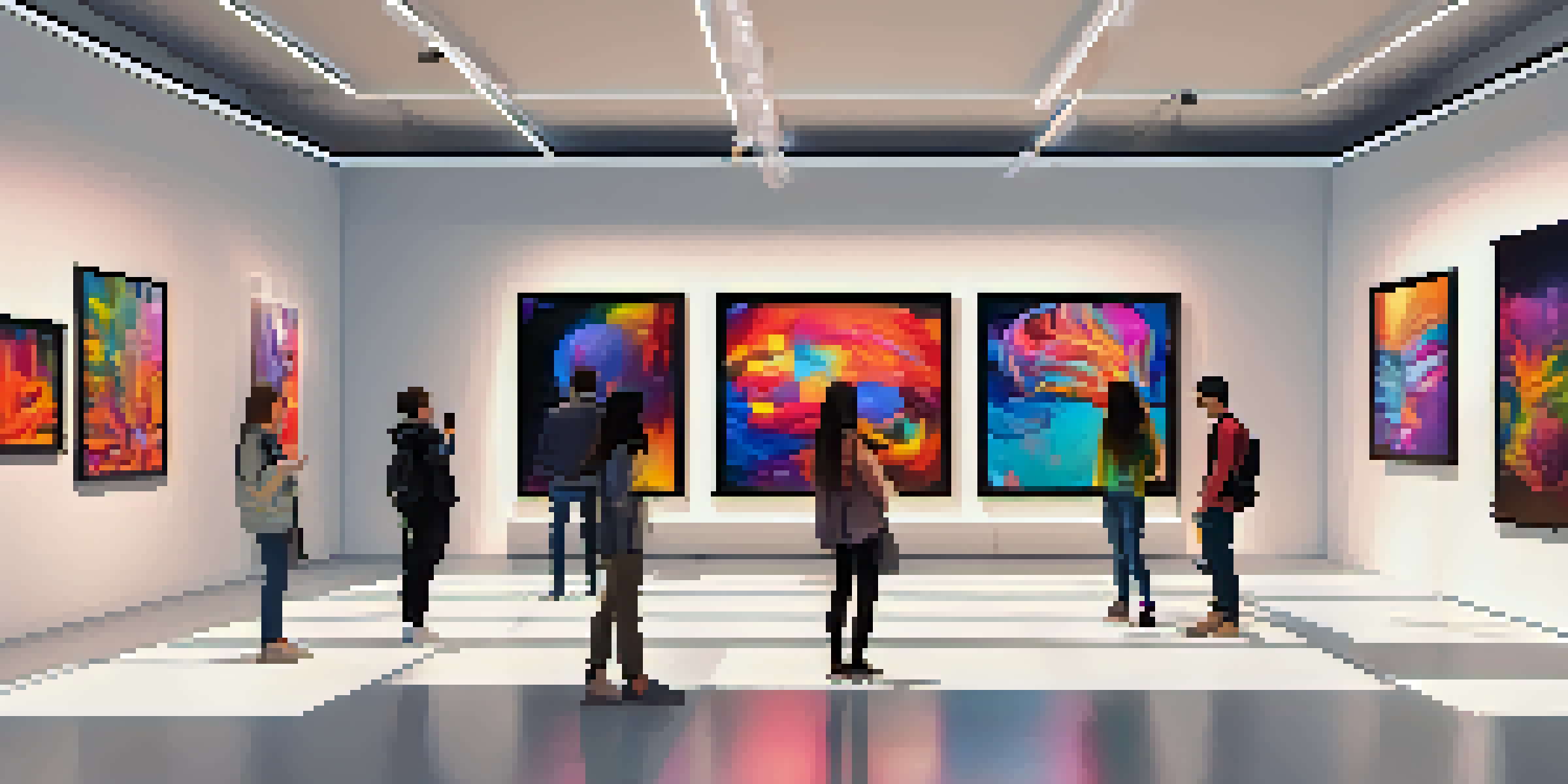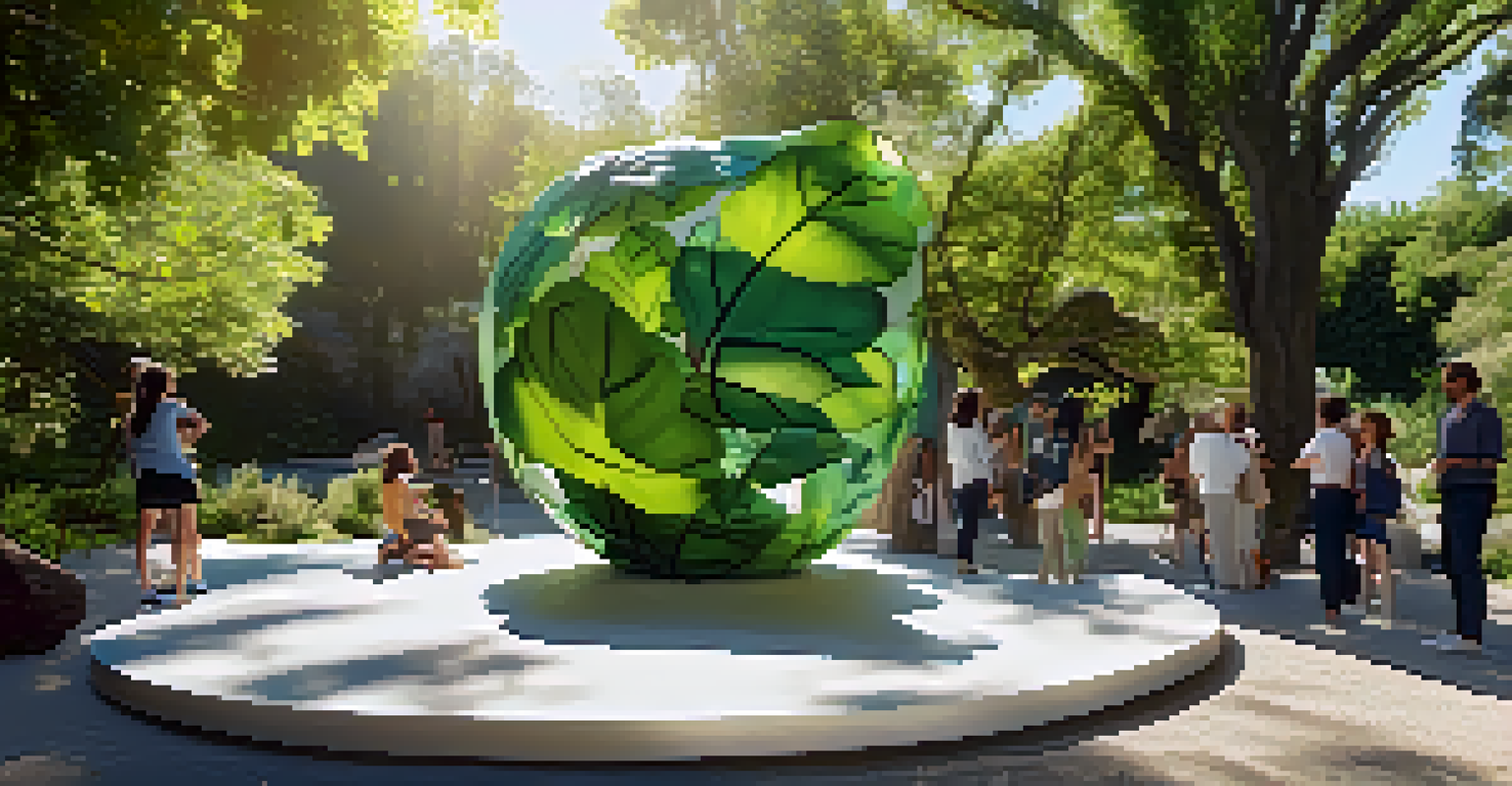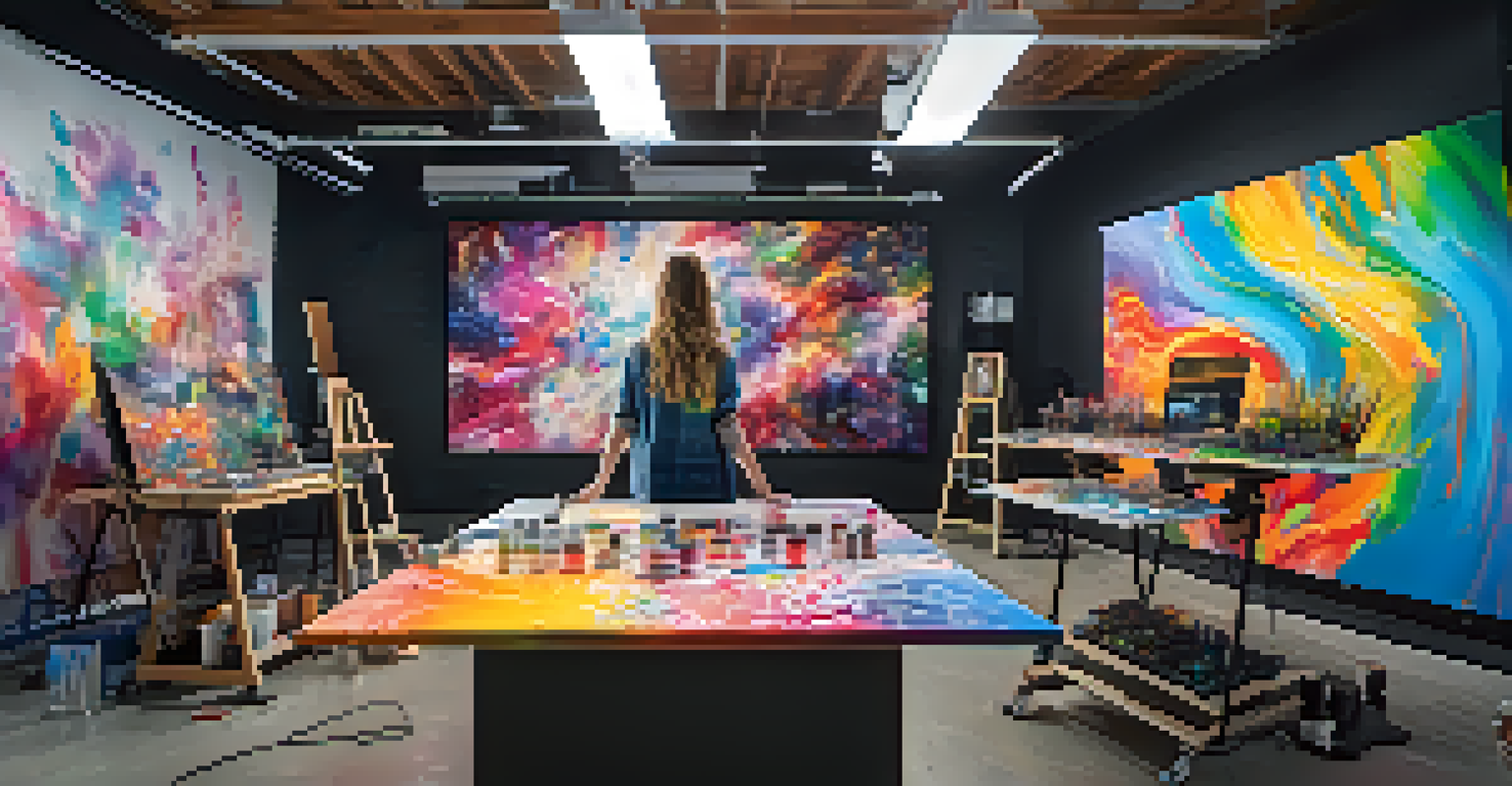The Future of Art Market: Predictions and Emerging Trends

The Rise of Digital Art and NFTs
Digital art has surged in popularity, particularly with the advent of NFTs, or non-fungible tokens. These unique digital assets have opened new avenues for artists and collectors alike, allowing for ownership and provenance verification on the blockchain. As more artists embrace digital mediums, we can expect to see a broader acceptance of digital art in traditional galleries and exhibitions.
The future of art belongs to those who can adapt and innovate.
NFTs have not only empowered artists to monetize their work directly but have also attracted mainstream attention. High-profile sales, such as Beeple's $69 million NFT, have made headlines, inviting both curiosity and skepticism. This trend suggests that digital art is not a fleeting fad but rather a transformative force in the art world.
Looking ahead, we can anticipate a continued integration of digital art into the broader art market. As technology evolves, it will likely influence how art is created, sold, and experienced, pushing boundaries and encouraging innovation in artistic expression.
Sustainability in Art Practices
Sustainability is becoming a crucial consideration in the art world, with artists and institutions increasingly focusing on eco-friendly practices. From using sustainable materials to reducing waste in exhibitions, the push for greener art is gaining momentum. This shift reflects a broader societal awareness of environmental issues and the role of art in advocating for change.

Many contemporary artists are exploring themes of nature and sustainability in their work, prompting conversations about responsibility and conservation. This trend not only resonates with eco-conscious audiences but also encourages emerging artists to think critically about their practices. As sustainability becomes a priority, we may see a rise in collaborative projects that emphasize community engagement and environmental stewardship.
Digital Art's New Era with NFTs
The rise of NFTs is transforming digital art, providing artists with new ways to monetize their work and gaining mainstream acceptance.
In the future, the art market may witness a demand for artwork that embodies ethical and sustainable values. Collectors and institutions may increasingly seek out works that align with their commitment to social responsibility, fostering a deeper connection between art and the environment.
The Impact of Technology on Art Creation
Technology is revolutionizing how art is created, with tools like augmented reality (AR) and virtual reality (VR) offering artists new dimensions to explore. These technologies allow for immersive experiences that can engage audiences in ways traditional art forms cannot. As artists experiment with these mediums, we can expect innovative creations that challenge our understanding of art.
Art is not a thing; it is a way.
Moreover, AI-driven art is gaining traction, sparking debates about creativity and authorship. Algorithms can generate artwork, but the question remains: who is the true artist? This intersection of technology and creativity is expanding the definition of art, inviting us to rethink our perceptions.
As we look to the future, the integration of technology in art creation will likely continue to grow. Artists will harness these tools not only for aesthetic purposes but also to provoke thought and dialogue about the role of technology in our lives.
Globalization and the Art Market
In our interconnected world, globalization is reshaping the art market, facilitating cross-cultural exchanges and diverse artistic expressions. Artists from various backgrounds are gaining visibility, enriching the global art scene. This trend fosters a more inclusive understanding of art, breaking down barriers that once limited access to certain voices.
Art fairs and exhibitions are increasingly showcasing works from international artists, allowing collectors to explore a broader range of styles and perspectives. This global approach not only diversifies collections but also encourages cultural dialogue and collaboration among artists. As the market expands, the blend of different influences will yield innovative art forms.
Sustainability Shapes Art Practices
Artists are increasingly prioritizing eco-friendly practices, reflecting a societal push towards sustainability and ethical values in art.
Looking ahead, the art market will likely continue to embrace globalization, creating opportunities for artists and collectors alike. This evolution will encourage a more dynamic and multifaceted art world, where diverse narratives can thrive.
The Role of Social Media in Art Promotion
Social media has transformed the way artists promote their work and connect with audiences. Platforms like Instagram and TikTok allow artists to showcase their creations, build a following, and engage with potential buyers directly. This democratization of art promotion has empowered emerging artists to reach wider audiences without relying solely on traditional galleries.
Moreover, social media is shaping art trends and movements, as viral content can elevate unknown artists to fame overnight. This instantaneous feedback loop creates a unique dynamic where artists can gauge audience reactions in real time, influencing their future work. It fosters a sense of community, enabling artists and collectors to interact and collaborate more easily.
As we move forward, the influence of social media on the art market will likely persist. Artists who effectively harness these platforms will not only enhance their visibility but also contribute to a more vibrant and accessible art community.
The Evolution of Art Collecting
Art collecting is evolving, with new demographics entering the market and shifting traditional perceptions. Younger collectors are increasingly drawn to diverse and unconventional art, valuing authenticity and personal connection over established names. This change is reshaping galleries and auction houses, prompting them to adapt to the preferences of a new generation.
Additionally, the rise of online platforms has made art collecting more accessible than ever. Collectors can now explore and purchase works from the comfort of their homes, expanding their horizons beyond local galleries. This trend democratizes art ownership, allowing a broader array of voices to participate in the market.
Technology Redefines Art Creation
Emerging technologies like AR, VR, and AI are revolutionizing how art is created, challenging traditional definitions and fostering new forms of expression.
Looking to the future, we can expect art collecting to continue embracing inclusivity and innovation. As collectors seek unique narratives and experiences, the art market will evolve to cater to these changing preferences, fostering a more diverse landscape.
The Future of Art Institutions and Galleries
Art institutions and galleries are undergoing significant transformations in response to changing audience expectations and technological advancements. Many are reimagining their roles from traditional gatekeepers to dynamic spaces for community engagement and dialogue. This shift allows for a more inclusive approach to art, where diverse voices and perspectives can flourish.
Incorporating technology into their programming, galleries are offering virtual tours, interactive exhibitions, and online workshops. These innovations make art more accessible to broader audiences, transcending geographical limitations. As institutions embrace these changes, they will likely attract new visitors and foster deeper connections with their communities.

As we look ahead, the future of art institutions will likely revolve around adaptability and inclusivity. By embracing change and innovation, galleries can continue to thrive in a rapidly evolving art landscape, ensuring that art remains relevant and impactful.